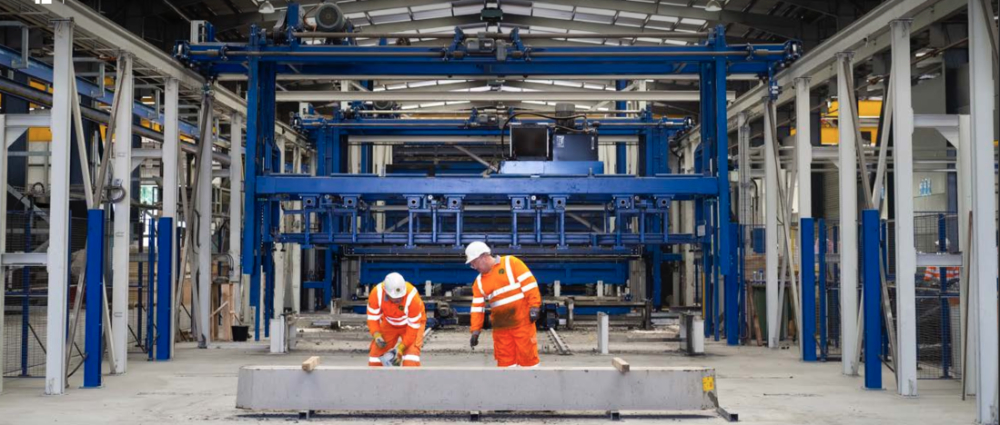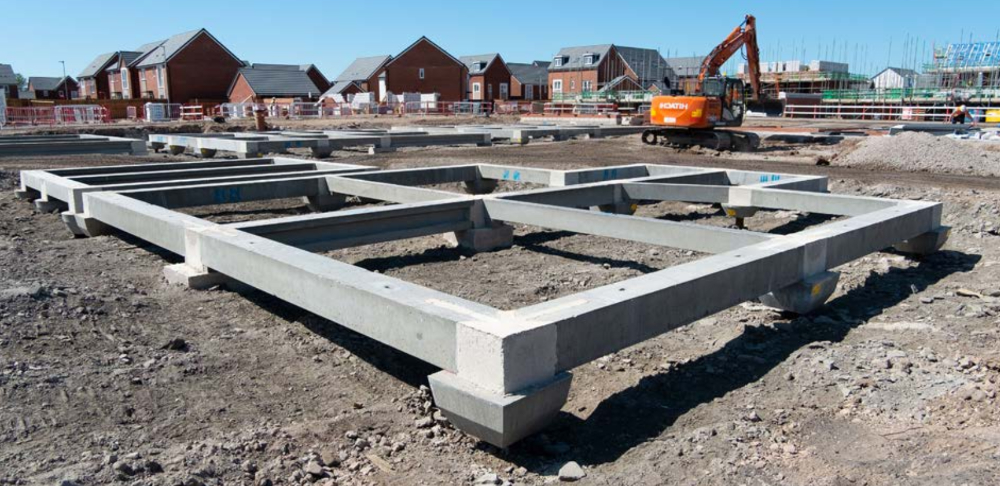The benefits of precast, off-site foundation systems in modern construction
In the dynamic world of construction, achieving efficiency, sustainability, and high quality is crucial. The implementation of precast, off-site foundation systems supports these objectives; a notable innovation that offers a host of benefits that traditional methods cannot match. Let’s take a look at them.
1. Enhanced quality control
One of the primary advantages of precast, off-site foundation systems is the enhanced quality control they offer. Components are manufactured in a controlled factory environment, which allows for stringent quality checks throughout production. This controlled setting ensures that the foundations meet precise specifications and standards, reducing the likelihood of defects and inconsistencies that can occur with on-site casting.
2. Time efficiency
Time is a critical factor in construction projects, and delays can lead to significant cost overruns. Precast foundations can be produced simultaneously with site preparation activities, significantly reducing the overall project timeline. Once the site is ready, the precast components can be quickly installed, minimising on-site labour and reducing the risk of weather related delays.
3. Cost savings
Overall cost savings of utilising precast foundations can be substantial. The reduction in on-site labour, shorter construction timelines, reduced need for excavation compared to traditional footings and decreased need for rework due to quality issues all contribute to lower overall project costs. Additionally, the predictability of factory production helps in better budgeting and financial planning.
4. Sustainability and environmental benefits
Precast, off-site foundation systems contribute to sustainability in several ways. The controlled manufacturing environment allows for the efficient use of materials which reduces overall waste. The reduced need for on-site construction activities also means less noise, dust, and disruption to the surrounding environment.
5. Improved safety
Construction sites are inherently hazardous, with numerous risks to workers’ safety. By shifting a significant portion of the work to a controlled factory environment, the risks associated with on-site construction are greatly reduced. Factory settings are typically safer, with better working conditions and fewer hazards. This shift not only protects workers but also reduces the likelihood of accidents that can cause project delays and additional costs.
6. Design flexibility and reduced excavation
Precast foundations offer a high degree of design flexibility. Modern manufacturing techniques allow for the production of complex shapes and sizes that would be difficult to achieve with traditional on-site casting. This flexibility enables architects and engineers to design innovative structures without being constrained by the limitations of conventional construction methods. Additionally, precast foundations can be customised to meet specific project requirements, including unique architectural features and challenging site conditions.
7. Durability and longevity
The durability of precast concrete is well-documented. These components are designed to withstand harsh environmental conditions and heavy loads, ensuring the longevity of the foundation. Precast foundations are less susceptible to common issues such as shrinkage, cracking, and corrosion, which can compromise the integrity of traditional cast-in-place foundations over time. This resilience translates to lower maintenance costs and a longer service life, providing a more reliable and cost-effective solution for construction projects.
8. Reduced site disruption
Traditional on-site foundation construction can be highly disruptive, with significant noise, dust, and traffic impacts on the surrounding area. Precast foundations, on the other hand, are delivered ready to install, significantly reducing the duration and intensity of on-site activities.
This reduction in site disruption is particularly beneficial in urban areas or other sensitive environments where minimising the impact on the local community is crucial.
9. Consistency and predictability
The factory production of precast components ensures a level of consistency and predictability that is difficult to achieve with on-site casting. Each component is produced to exact specifications, ensuring uniformity and reducing the risk of errors. This consistency translates to a more predictable construction process, with fewer surprises and setbacks.
10. Adaptability to various project types
Precast, off-site foundation systems are highly adaptable and can be used in a wide range of construction projects, from residential buildings to large commercial and industrial structures. Their versatility makes them an attractive option for projects with diverse requirements and constraints. These systems can be tailored to meet specific site conditions, such as varying soil types and load-bearing requirements. This adaptability ensures they can be effectively integrated into both new constructions and renovations, providing a flexible solution that meets the unique needs of each project. Furthermore, the ability to produce custom components allows for seamless integration with other building systems, enhancing overall project coherence and performance.
The adoption of precast, off-site foundation systems offers numerous benefits that align with the modern construction industry’s goals of efficiency, sustainability, and quality. From enhanced quality control and time efficiency to cost savings and improved safety, these systems provide a robust foundation for successful construction projects. As the industry continues to evolve, the use of precast foundations is likely to become even more prevalent, driving innovation and excellence in construction practices. By embracing these advanced foundation systems, construction professionals can deliver projects that meet the highest standards of performance and sustainability, ensuring long-term success and satisfaction for all stakeholders involved.
This article appears in the AT Journal issue 153 Spring 2025 as 'The benefits of precast, off-site foundation systems in modern construction' and was written by Joe Bayley MCIAT, Senior Project Engineer, Roger Bullivant Ltd.
--CIAT
[edit] Related articles on Designing Buildings
- Cast-in-place concrete.
- Cellular concrete.
- Cement-free precast product.
- Concrete.
- Concrete frame.
- Concrete-steel composite structures.
- Concreting plant.
- Design of durable concrete structures.
- Ground beam.
- Grouting in civil engineering.
- Precast.
- Precast concrete.
- Precast concrete cladding.
- Prestressed concrete.
- Rebar.
- Reinforced concrete.
- Slip form.
- Smart concrete.
- Stratification of concrete.
- The properties of concrete.
- The use of concrete structures to protect construction sites.
- Tilt up construction.
- Whittington Estate..
Featured articles and news
One of the most impressive Victorian architects. Book review.
RTPI leader to become new CIOB Chief Executive Officer
Dr Victoria Hills MRTPI, FICE to take over after Caroline Gumble’s departure.
Social and affordable housing, a long term plan for delivery
The “Delivering a Decade of Renewal for Social and Affordable Housing” strategy sets out future path.
A change to adoptive architecture
Effects of global weather warming on architectural detailing, material choice and human interaction.
The proposed publicly owned and backed subsidiary of Homes England, to facilitate new homes.
How big is the problem and what can we do to mitigate the effects?
Overheating guidance and tools for building designers
A number of cool guides to help with the heat.
The UK's Modern Industrial Strategy: A 10 year plan
Previous consultation criticism, current key elements and general support with some persisting reservations.
Building Safety Regulator reforms
New roles, new staff and a new fast track service pave the way for a single construction regulator.
Architectural Technologist CPDs and Communications
CIAT CPD… and how you can do it!
Cooling centres and cool spaces
Managing extreme heat in cities by directing the public to places for heat stress relief and water sources.
Winter gardens: A brief history and warm variations
Extending the season with glass in different forms and terms.
Restoring Great Yarmouth's Winter Gardens
Transforming one of the least sustainable constructions imaginable.
Construction Skills Mission Board launch sector drive
Newly formed government and industry collaboration set strategy for recruiting an additional 100,000 construction workers a year.
New Architects Code comes into effect in September 2025
ARB Architects Code of Conduct and Practice available with ongoing consultation regarding guidance.
Welsh Skills Body (Medr) launches ambitious plan
The new skills body brings together funding and regulation of tertiary education and research for the devolved nation.
Paul Gandy FCIOB announced as next CIOB President
Former Tilbury Douglas CEO takes helm.

























